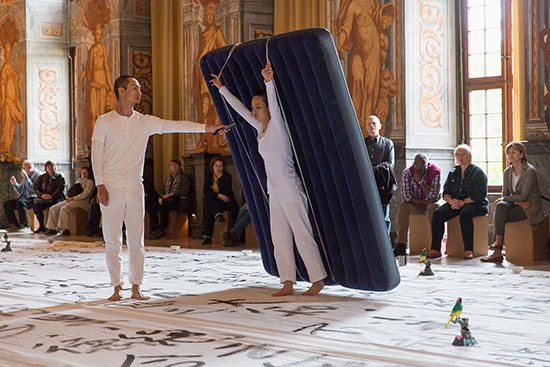 |
Xiao Ke and Zi Han image from artists’ website |
Stiff Gins, Force Majeure and Kristina Chan, Jon Rose, Ross Manning, Mish Grigor, Tina Havelock Stevens, Liesel Zink and Asian artists Choy Ka Fai, Xiao Ke and Zi Han, Rianto and River Lin are the featured artists in 2016 Liveworks Festival of Experimental Art. Even at first glance, it looks impressive and, as you’ll read, concentrated and immersive. Dance figures well with five works (Chan, Zink, Xiao Ke and Zi Han, Rianto and an exhibition focusing on 21 Asian choreographers by Choy Ka Fai), alongside contemporary performance/live art (Grigor, Lin), music/installation (Rose, Havelock Stevens), visual art (Manning) and Indigenous duo Stiff Gins taking their music into contemporary performance.
Gender, protest, climate change, Indigeneity, the body and the politics of cultural history manifest strongly as festival themes. In an era of arts festival gigantism, Liveworks offers audiences an inclusive, intensive and highly focused exploration of experimental art. With turbulences large and small unleashed by festival works, Liveworks will loop us into its storm of creativity.
A few days before the release of the program, an exuberant Performance Space Artistic Director Jeff Khan fills me in on key components of his programming. The current vision for the event, first taking shape in 2015, is now firming, especially in terms of the festival’s engagement with Asia.
THE CARRIAGEWORKS TAKEOVER
We’re activating the whole of Carriageworks with a range of works for people to really immerse themselves in the festival. We’ve looked at last year’s three-week model and condensed it into two with a view to really amplifying the energy of multiple works. So, it’s over a shorter time-frame but it’s much denser in programmed activity.
ENGAGING WITH ASIA
We’ve expanded our focus on the Asia-Pacific region with not only more Asian artists but also three streams of exchange running through the festival. The Producer and Presenters Program brings in leading Asian producers, presenters and curators to see works and explore further opportunities for the artists in the festival. In the longer term, it means opportunities for Performance Space to collaborate with these visitors.
There’s also the Artists Exchange Lab which is about bringing Asian and Australian artists together to experience the festival as observers and to critically respond to it, to learn more about each other’s practices and to then decamp to Bundanon for a more intensive dialogue. They’re from across Australia and Asia—four Australian and four Asian—coming as festival guests and representing a range of experimental art-forms and career stages. It’s really about seeding long-term conversations with the aid of two facilitators.
The third aspect of the exchange program is a Taiwanese Arts Manager Exchange in partnership with the Taipei Performing Arts Alliance. Every year for the next three years they’ll send us a Taiwanese arts manager to be embedded in the festival for a program of professional development and exchange and we’ll send an Australian producer to Taiwan.
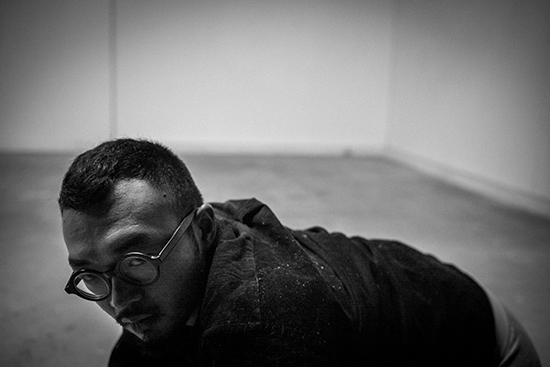 |
River Lin, Liveworks 2016 photo Youwei Chen |
RIVER LIN, CLEANSING SERVICE (TAIWAN)
There are a lot of interesting parallels between Australia and Taiwan in the experimental scene. Many Taiwanese artists are crossing art-form boundaries and engaging with new technologies—the sort of work we’ve been interested in at Performance Space for a very long time. It seemed like a natural fit to deepen. As part of it, we’ve curated into the program River Lin, a Taiwanese performance artist who visited Liveworks last year. He makes one-on-one performances and other quite intimate exchanges with audiences. He also makes durational works where he evokes an expansive and very different sense of time.
All of Lin’s work is centred in the body and is about invoking a sense of ritual exchange between himself and the audience. One of his well-known works of recent years is titled Kiss It Better. With a small audience, Lin is blindfolded and his lips painted with bright red lipstick. One by one he approaches his audience and asks them which part of their body hurts. The ritual performance involves kissing it better.
The brand new work he’s developing for us is called Cleansing Service and it continues that sense of intimacy in the exchange between performer and audience by looking at baptism rituals and the role of water in spiritual practices around the world.
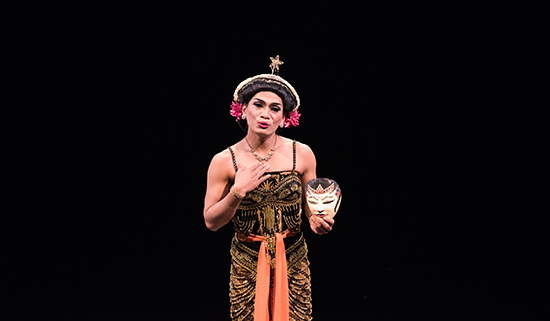 |
Rianto, SoftMachine, Liveworks 2016 photo Law Kiam Yan |
CHOY KA FAI, SOFTMACHINE: RIANTO [INDONESIA]
I’m really excited that we’re bringing two works from Singapore artist Choy Ka Fai’s SoftMachine to Liveworks. [The artist has been creating an “inventory” of Asian dance since 2012 which includes performances and a multimedia archive. Eds] One is by Indonesian dancer Rianto, whom I saw at a festival in Japan last year, Kyoto Experiment, and was absolutely blown away. As you know, we do a lot of programming around gender and sexuality at Performance Space. This is a very traditional dance, called Lengger, in which men have been performing as women for centuries. It’s an erotic fertility dance that has a completely different reading in tradition than in a contemporary context. His solo is all about unravelling that gender dynamic. He’s also an extremely accomplished contemporary dancer. As the performance progresses, there’s this slow transition from traditional Lengger garb as an Indonesian woman, stripping away those layers to become a man as the movement style shifts to a much more contemporary vocabulary. There’s also documentary film Choy Ka Fai has shot, which documents Rianto’s life. It’s a portrait of the artist as a kind of bridge between male and female, between traditional and contemporary art forms.
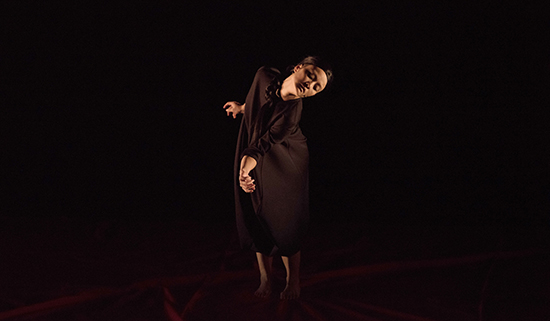 |
Zi Han, SoftMachine photo courtesy Liveworks 2016 |
CHOY KA FAI, SOFTMACHINE: XIAO KE AND ZI HAN [CHINA]
Chinese duo Xiao Ke and Zi Han make dance works in public spaces in China, practising their art outside traditional institutions. A lot of their work is politically and socially engaged to the point where they’ve come under fairly constant surveillance and scrutiny by the Chinese government. Their performance portrait is really about these conditions that inform their practice. Over the years they’ve been able to create a very detailed, very beautiful choreographic style and a spoken narrative with which they open up about the motivation for their practice and their experience of friction with authority. As with the whole SoftMachine series there’s also a documentary film component.
There’s also the SoftMachine exhibition for which Ka Fai has built an archive of interviews with 21 Asian choreographers alongside other visual material.
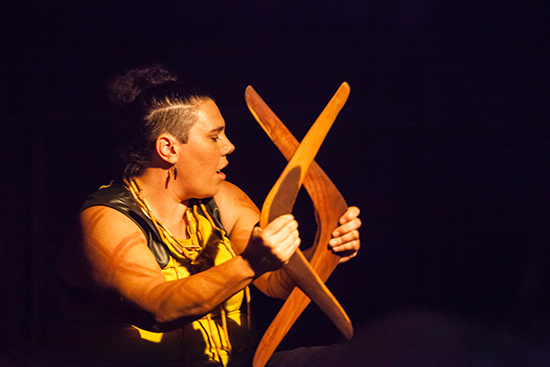 |
Nardi Simpson, Stiff Gins, Liveworks 2016 photo courtesy Liveworks 2016 |
STIFF GINS, SPIRIT OF THINGS
One of the major commissions is the Stiff Gins’ project, Spirit of Things. You might know them as Indigenous musical duo Nardi Simpson and Kaleena Briggs; this is their first step out of that frame into contemporary performance. It arose from a residency they did a couple of years ago at the Australian Museum in its permanent collection of cultural objects. They have a keen interest in that very current debate around Indigenous objects held in museums and the call to return items to their communities as living objects that have a lifespan and a broader cultural resonance beyond their materiality.
Nardi and Kaleena had a really interesting experience during the residency where they felt the objects speak to them, each with a story or quite distinct vision or series of images. These turned into stories and songs. They knew they needed a broader performance frame than just a music gig to be able to convey the weight of that cultural information that came to them and the pressing need for it to be released, which parallels the need for us to re-think how Indigenous culture is positioned more broadly. They’re collaborating with Felix Cross, a British theatre director who established Nitro, the first black theatre company in the UK. He’s very experienced in creating experimental theatre works that incorporate music.
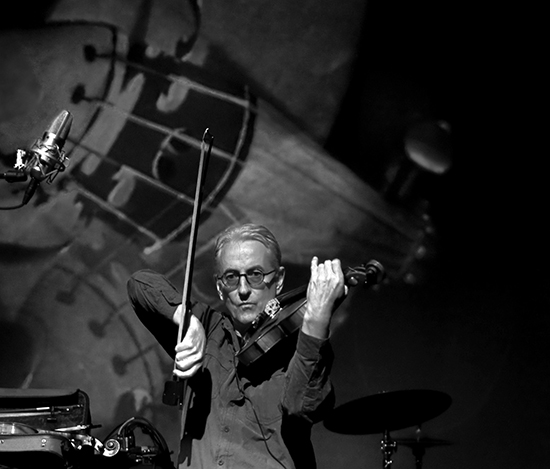 |
Jon Rose photo Jill Steinberg |
JON ROSE, THE MUSEUM GOES LIVE
Another key work involves much-loved Performance Space collaborator Jon Rose, whom I know RealTime has written about quite extensively. We’ve really reignited our collaboration with Jon in the last few years, presenting WRECK with Sydney Festival in 2013 and Ghan Tracks in 2014. This project, The Museum Goes Live, is an exhibition of the vast archive Jon has amassed over his career of violin-related iconography and ephemera. There’s a whole series of hand-made instruments—he’s a prolific instrument builder and experimenter. He’s also collected representations of the violin in advertising, the violin in commercial products, finding links between the violin and consumerism and capitalism. Every night over the two weeks Jon will come in with a team of experimental musicians and activate the exhibition in a concert format.
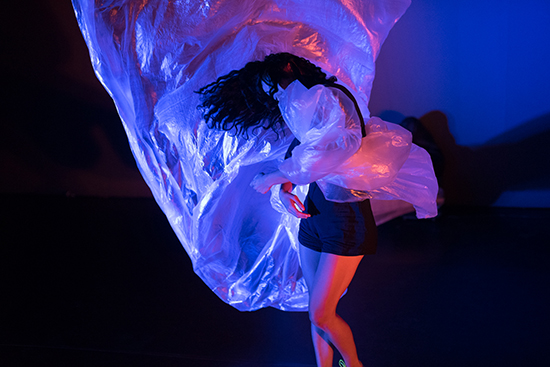 |
Kristina Chan, A Faint Existence photo Lucy Parakhina |
FORCE MAJEURE: KRISTINA CHAN, A FAINT EXISTENCE
A Faint Existence, a collaboration with Force Majeure, is the full-length choreographic debut of Kristina Chan, one of Australia’s most accomplished dancers who has been making forays into choreography of late (see this review of her contribution to Catapult’s PROPELLED in Newcastle). This work, in which she also performs, is being co-directed by Victoria Hunt. The two struck up a great relationship in the making of Tangi Wai in last year’s Liveworks in which Chan performed. So it’s wonderful, after fostering that connection between two artists, for Performance Space to be presenting this new work.
A Faint Existence looks at Kristina’s sense of responsibility and futility in the face of environmental change. She’s collaborated with Clare Britton to design an expanded elemental installation within which the performance takes place and James Brown will be doing a live sound score to create weather effects that also reflect internal states and are about the struggle of the individual to act in the face of such a globally scaled phenomenon.
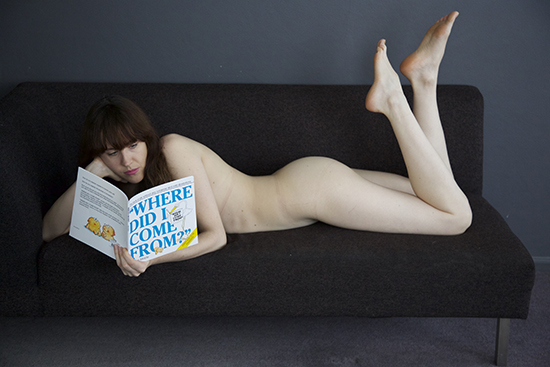 |
Mish Grigor, The Talk, Liveworks 2016 photo Jess Olivieri |
MISH GRIGOR, THE TALK
Mish is in Edinburgh at the moment doing a season of The Talk at Forest Fringe. I’m delighted that she is presenting this work about the ways a family talks about sex She’s structured it around the style of her own family gatherings. (Read a review of a performance of The Talk at Field Theory’s Site is Set).
TINA HAVELOCK STEVENS, THUNDERHEAD
I’m really delighted that we’re presenting Thunderhead by Tina Havelock Stevens, which has just premiered at DARKMOFO in Hobart. It’s an enormously scaled projection of this incredible storm that Tina filmed from a car window as she drove on a road trip in Texas last year. Tina is an Australian artist who spends a lot of time in the US.
The storm is an incredible form that doesn’t even look real, an almost divine manifestation of the turbulence of the climate captured in an extended tracking shot. It’s projected onto a large wall, so it’s very imposing, overwhelming. Tina is a musician as well as a video artist and will perform to her recorded score every night of the exhibition. The video loop is about 15-20 minutes and the storm itself is a loop so the whole work becomes hypnotic and the musicians, Tina on drums and Liberty Kerr on guitar, enter a trance-like state, drawing themselves musically into the storm. This is another work for me that engages with the environment in a really interesting way. At DARKMOFO the audience was completely riveted, drawn into the storm. The sense of foreboding is very tangible.
ROSS MANNING: MELODY LINES
With Carriageworks we’ve co-commissioned a large-scale installation work, Melody Lines, from internationally exhibited, Brisbane-based visual artist Ross Manning. Using lo-fi mechanics and industrial materials, it’ll be a constantly moving, psychedelic landscape of light and colour in the vast Carriageworks foyer.
WE THE PEOPLE
We the People has been curated by Tulleah Pearce, Performance Space’s Program Manager, pairing four contemporary artists with four of the idiosyncratic community organisations in the Carriageworks neighbourhood. Artists are currently in residence working towards creating a site-specific performance or installation or intervention into the host organisation. Activist artist Deborah Kelly is paired with the Association for Good Government, which occupies a tiny building on the way from Redfern railway station. It involves a group of concerned citizens who hold government accountable, addressing the principles of good government. Ben Forster, a visual and media artist, is paired with Esperanto House, one of the last bastions of Esperanto enthusiasm. He’s an artist interested in self-generating data and random connections, so I think the idea of an invented language fits very well with his conceptual concerns.
Aunty Beryl Van-Oploo, a local Indigenous elder who runs a whole range of Indigenous catering, hospitality and employment training programs, is collaborating with Anna McMahon, an installation artist who uses live plants and food in her practice. The fourth is visual artist and performer David Capra who is making a work with the Sydney Arabic Choir who practice in a beautiful venue at Sydney University. Given his interest in religion, ritual and speaking in tongues David and the choir are going to create a ceremonial performance.
We the People is a kind of satellite project happening on the first weekend of the festival. Audiences will be invited to come to Carriageworks, receive a map and take themselves on the tour to each of these spaces.
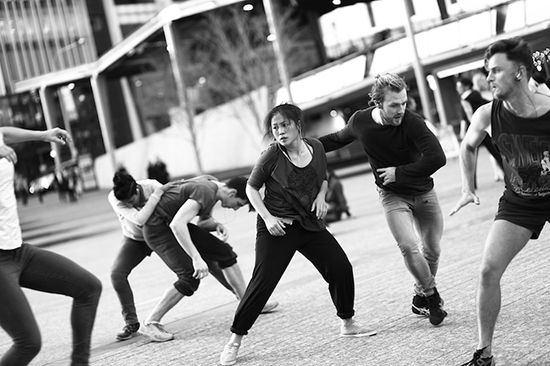 |
The Stance, Liesel Zinc and company photo FenLan Chuang |
LIESEL ZINK, THE STANCE
We’re working towards staging a different aspect of Liesel Zink’s The Stance (read a review of the Brisbane premiere) every night in the Carriageworks public space in the festival’s second week. It looks at the history of protest in Australia and translates its physical language into choreographed movement. It’s a durational work and quite gruelling for the dancers as they speak to the physical commitment of activism and protest. That will be on every night in a different part of the Carriageworks public space, culminating in a full-length presentation in the morning of the final day of the festival at the Eveleigh Markets, using the thoroughfare [between the market and the Carriageworks building] as shared civic space.
A FESTIVAL-BASED PERFORMANCE SPACE: PROGRESS
We were so excited to see Liveworks unfold last year and to see audiences take up the offer to really immerse themselves in the festival. We’re really keen to build on that and to refine the programming to create an even more intense experience for audiences. For me, the international aspect locking in—the Asian artists, the Artists Exchange Lab, the Producer and Presenters Program and the Arts Manager Exchange with Taiwan—and our other programming create a festival on a much bigger scale than we’d be able to achieve in a year-round program; and at the same time we’re seeding future possibilities and collaborations between Australia and Asian artists. The festival model is very much alive and we discover something new about it each year.
Performance Space, Liveworks Festival of Experimental Art; Carriageworks, Sydney, 27 Oct-6 Nov; see the program here.
RealTime issue #134 Aug-Sept 2016 pg.
© Keith Gallasch; for permission to reproduce apply to [email protected]








 back
back